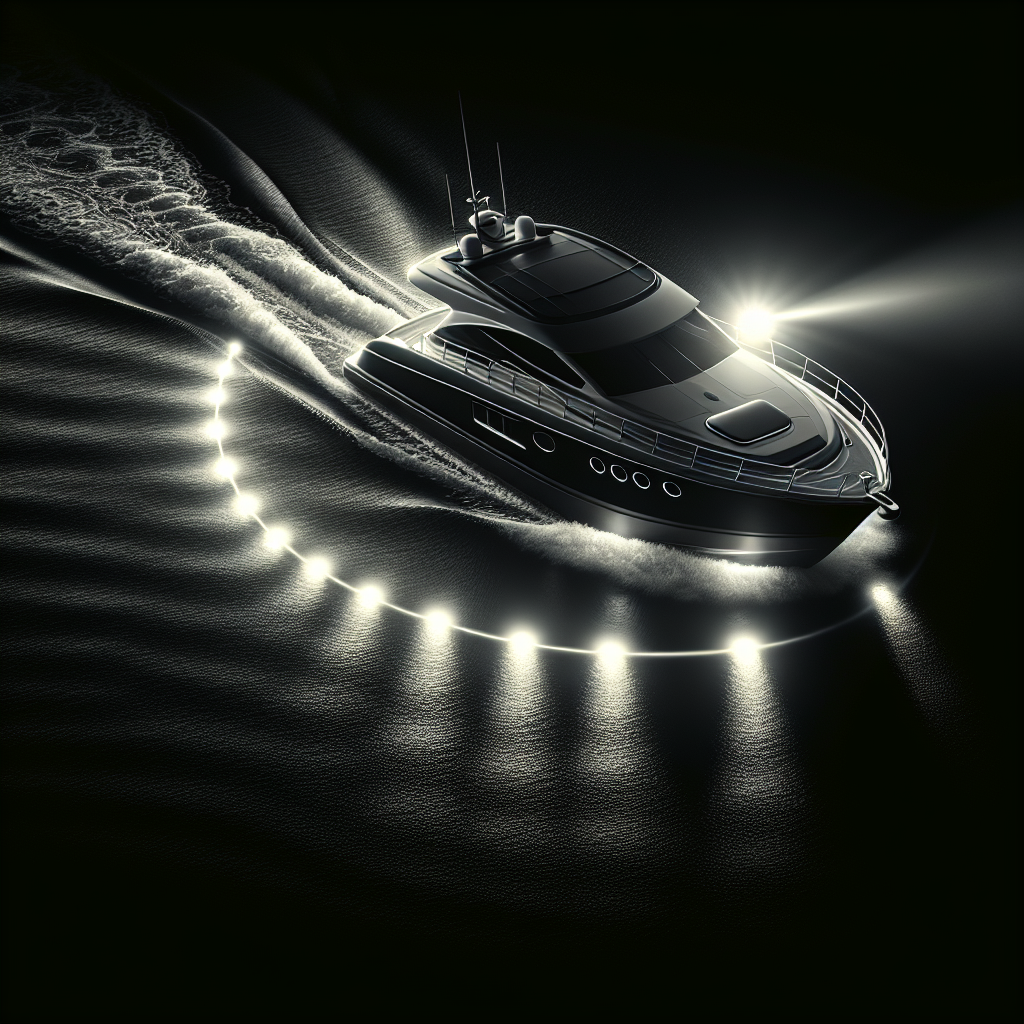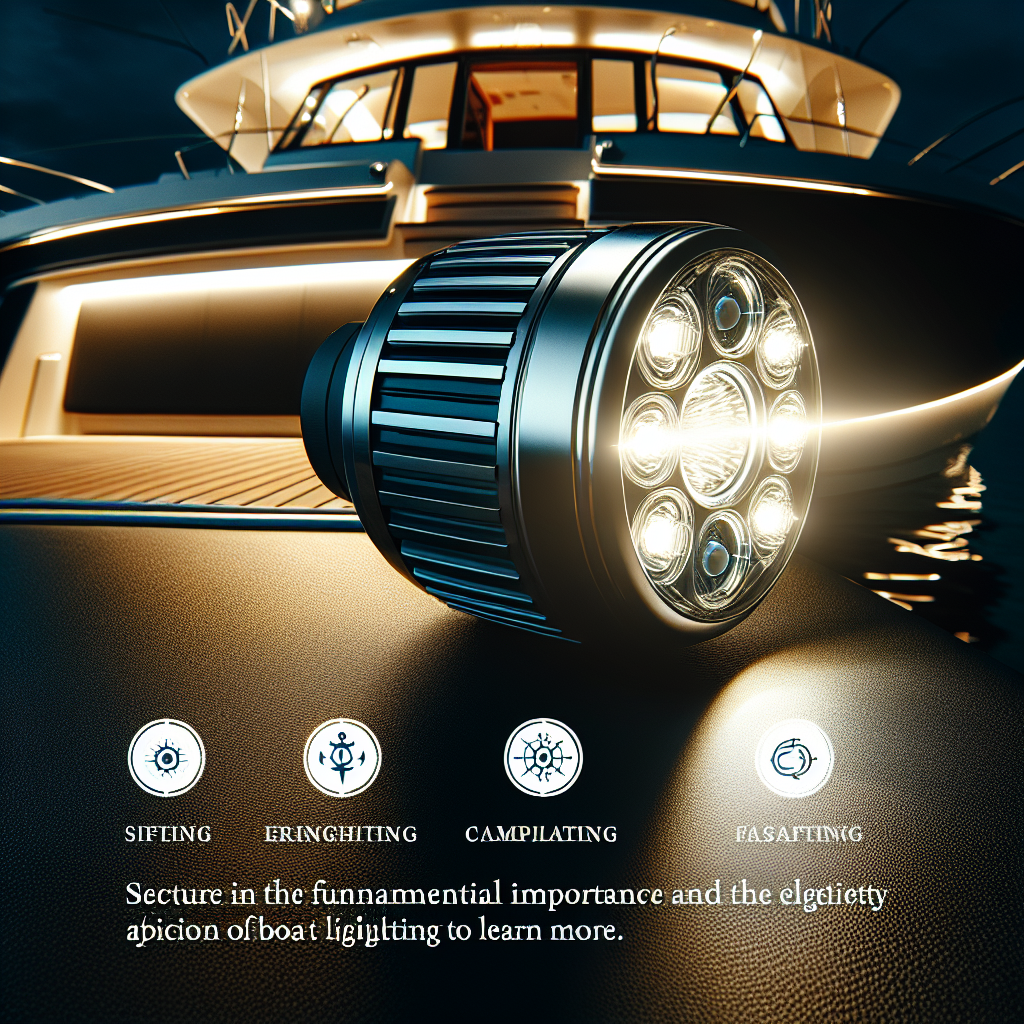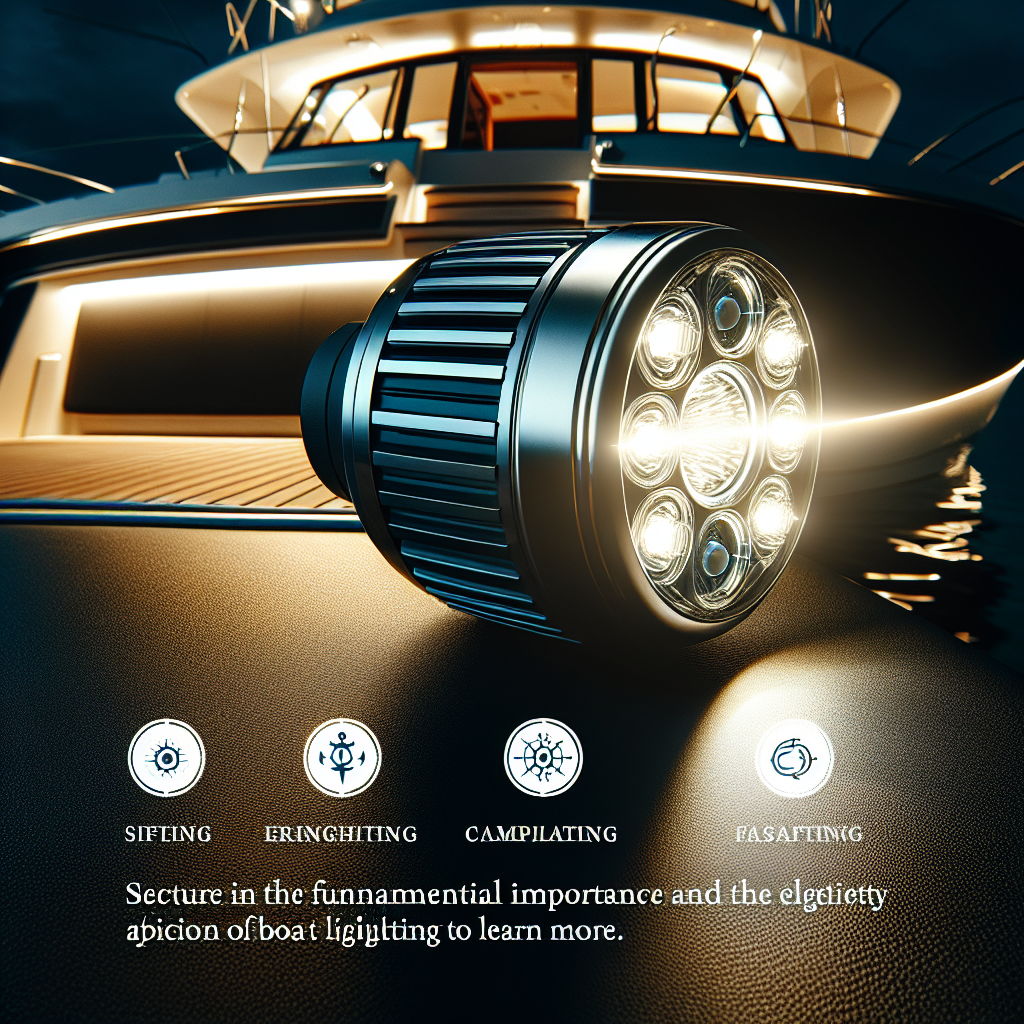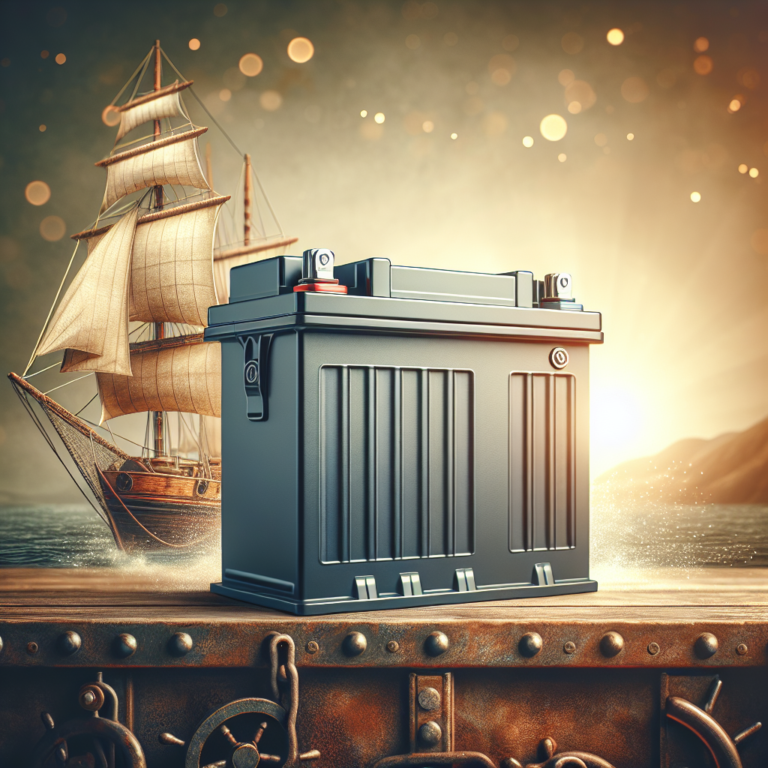What Color Is A Boat’s Stern Light? Unraveling the Mystery
So you’re out on the water, enjoying a beautiful sunset as you cruise along in your boat. As darkness begins to fall, you turn on your boat’s stern light to ensure your vessel remains visible to other boaters. But have you ever wondered what color that stern light is?
In this article, we’ll explore the answer to that very question and shed some light on the importance of this essential navigational tool.
Understanding Stern Light
Definition of Stern Light
A boat’s stern light refers to the light installed at the rear or aft part of the vessel. It is an essential component of navigation lights that help to ensure the safety of boaters during nighttime or poor visibility conditions. The stern light is specifically designed to emit a bright and visible signal to alert other vessels of the boat’s presence and direction.
The function of Stern Light on a Boat
The primary function of a boat’s stern light is to provide a clear indication of the vessel’s position and direction. It serves as a crucial navigational aid, allowing other boats to determine the location, heading, and size of the boat in the water.
The stern light helps prevent collisions by enabling boaters to identify and avoid potential hazards in their vicinity, leading to enhanced safety on the water.
Color of a Boat’s Stern Light
General Color Specification for Stern Light
The internationally accepted color for a boat’s stern light is white. This color is specified to ensure consistency and clarity across different vessels and waterways. The white light is chosen for stern lights as it offers maximum visibility and contrast against the darkness of the water.
It allows other boaters to easily distinguish a boat’s position and helps them gauge the direction and movement of the vessel.
Reasoning Behind the Specific Color
The white color of a stern light serves a practical purpose. It contrasts with the surrounding environment, making it easier for boaters to identify other vessels and determine their course. White light is highly visible even in challenging weather conditions and ensures that boaters can effectively navigate and avoid potential collisions.
Additionally, white light provides a uniform standard that enables boaters from different regions and countries to quickly recognize the signal.

History of Boat’s Stern Light
Origin and Evolution of Stern Lights
The use of stern lights can be traced back to ancient times when boats used lanterns and bonfires to signal their presence in the water at night. As technology advanced, various lighting devices were developed, including oil lamps and kerosene lanterns. These older forms of stern lights were often manually operated and required regular maintenance.
Over time, with advancements in electrical lighting, the stern lights on boats evolved into more efficient and reliable sources of illumination. Incandescent bulbs were commonly used before the emergence of LED technology.
Historical Importance of Stern Light’s Color
In the past, the color of boat stern lights varied considerably based on cultural preferences and available technology. Some boats used red or green lights at the stern, while others employed yellow or blue lights. However, these variations often led to confusion and potential accidents on the water.
Recognizing the need for consistency and safety, authorities established international standards that specified white as the universal color for stern lights. This change greatly improved navigational safety and reduced the risk of collisions between vessels.
Legal Requirements and Regulations of Stern Light
International Maritime Organization Regulations
The International Maritime Organization (IMO) has established stringent regulations regarding boat lighting, including stern lights. According to the IMO’s International Regulations for Preventing Collisions at Sea (COLREGs), all vessels are required to display a white stern light while underway at night or in conditions of restricted visibility.
These regulations outline the specifications for the placement, brightness, and visibility range of the stern light. Compliance with the IMO regulations is crucial to ensure the safety of all boats operating in international waters.
US Coast Guard Regulations
In the United States, the U.S. Coast Guard has its own set of regulations that govern the use of stern lights on boats. These regulations are in line with international standards but may have slight variations or additional requirements specific to U.S. waterways.
Boat owners must familiarize themselves with the U.S. Coast Guard’s regulations and ensure that their stern lights meet all the necessary criteria, including correct color, brightness, and positioning. Failure to comply with these regulations can result in penalties or restrictions on boating activities.
Regional Variations in Stern Lighting Regulations
While the IMO regulations provide a global standard for stern lights, different regions, and countries may have additional requirements or specific variations. It is important for boaters to research and understand the local regulations governing stern lights in their respective areas of operation.
Regional variations may include factors such as allowed color combinations for navigation lights, specific positioning requirements, or additional lighting specifications for certain types of vessels. Boaters should consult local authorities or maritime agencies to ensure compliance with all applicable regulations.

Importance of Correct Stern Light Color
Role in Navigational Safety
The correct color of a boat’s stern light plays a crucial role in navigational safety. By using a universally recognized white stern light, boaters ensure that their vessel is easily visible to other boats, regardless of whether they are operating in domestic or international waters.
This standardization enables boaters to quickly assess the position, direction, and relative motion of other vessels, thus reducing the risk of collisions.
Prevention of Maritime Accidents
Using the correct stern light color helps prevent maritime accidents by promoting clear communication and awareness between boats. It allows boaters to make informed decisions about navigation, course adjustments, and potential collision avoidance maneuvers.
The visibility provided by the stern light color enhances situational awareness of the water, reducing the chance of accidents and near-misses that could result in damage, injury, or loss of life.
Responsibility of the Boat Owner
Boat owners have a responsibility to ensure that their vessel is equipped with a properly functioning and compliant stern light. This includes selecting a stern light that emits the correct white color, satisfying the required brightness level, and meeting all relevant regulations.
Regular maintenance and inspection of the stern light are also essential to ensure its continued effectiveness. Boat owners should regularly check for bulb burnouts, wiring issues, or any physical damage that could impair the light’s visibility.
By fulfilling their responsibility, boat owners contribute to the overall safety and security of the maritime community.
Types of Stern Lights Available
Traditional Stern Lights
Traditional stern lights typically utilize incandescent bulbs as their light source. These lights were reliable and readily available in various sizes and shapes. However, they had a higher energy consumption compared to modern LED alternatives and required more frequent bulb replacements.
Many boat owners still choose traditional stern lights due to their affordability and familiarity. However, they should be aware of the advantages offered by newer technologies and consider making the switch to more efficient and long-lasting options.
LED Stern Lights
LED (Light Emitting Diode) stern lights have become increasingly popular due to their numerous benefits. LED technology offers higher energy efficiency, durability, and a longer lifespan compared to traditional incandescent bulbs. LED stern lights also produce a brighter light output, allowing for enhanced visibility and a wider viewing range.
Another advantage of LED stern lights is that they require minimal maintenance and have a lower risk of bulb burnout. This saves boat owners both time and money in the long run. LED stern lights are available in a variety of styles and sizes to suit different types of boats and mounting configurations.
Comparison between Different Types of Stern Lights
When choosing between traditional and LED stern lights, there are several factors to consider. While traditional stern lights may be more affordable upfront, LED lights offer significant long-term cost savings due to their energy efficiency and extended lifespan.
LED stern lights also provide superior visibility, making it easier for other boaters to detect and interpret their signals. However, boat owners should ensure that the LED lights they select comply with all relevant regulations to avoid any legal complications.
Ultimately, the decision between traditional and LED stern lights depends on individual preferences, budget considerations, and the desire for enhanced performance and durability.
Installation of Stern Light on a Boat
Ideal Location for Installation
The placement of a boat’s stern light is crucial for optimal visibility and compliance with regulations. Generally, stern lights are located at the highest point of the vessel, ideally centered and unobstructed by other equipment or structures.
This positioning helps maximize their visibility from all angles and ensures that the light’s signal is not obscured by the boat’s own structure.
Boat owners should consult the manufacturer’s instructions or seek professional advice to determine the best location for their specific vessel. Proper installation is essential to maintain navigational safety and avoid potential penalties for non-compliance.
Step-by-Step Guide for Installation
Installing a stern light on a boat can be a straightforward process when following the correct steps. The following guide provides a general overview of the installation process:
- Gather the necessary tools and equipment required for installation, such as a drill, screwdriver, wiring, connectors, and mounting brackets.
- Select the ideal location for the stern light, ensuring it is unobstructed and positioned at the highest point on the boat.
- Install the mounting bracket according to the manufacturer’s instructions. Secure it firmly in place using the appropriate screws or fasteners.
- Connect the wiring for the stern light, ensuring proper insulation and protection against water damage.
- Attach the stern light to the mounting bracket, ensuring it is securely affixed and aligned correctly.
- Test the stern light to ensure it is functioning correctly and emitting the proper color and brightness.
- Conduct a final inspection to verify that the installation meets all relevant regulations and guidelines.
Following these steps should result in the successful installation of a boat’s stern light, providing enhanced safety and compliance during navigation.
Precautions During Installation
While installing a stern light, certain precautions should be taken to ensure a safe and effective installation process:
- Ensure that the boat’s power source is disconnected to avoid potential electrical hazards during the installation.
- Use appropriate waterproofing measures to protect all wiring connections from moisture and corrosion.
- Double-check all connections and fastenings to ensure they are secure and do not pose a risk of detachment or damage.
- Consult a professional or seek guidance if unsure about any aspect of the installation process to avoid making mistakes or compromising safety.
By exercising caution and adherence to safety protocols during installation, boaters can mitigate risks and safeguard their vessels and passengers.
Maintenance of Stern Lights
Frequency of Maintenance
Proper maintenance of a boat’s stern light is crucial to ensure consistent performance and compliance with regulations. Maintenance tasks should be performed regularly, with the frequency determined by factors such as usage, environmental conditions, and the type of stern light.
As a general guideline, boat owners should inspect their stern lights before each outing and conduct a more thorough inspection at regular intervals, such as every six months or annually. This schedule allows for the timely detection and resolution of any issues that may arise.
General Stern Light Maintenance Tips
To maintain the functionality and efficiency of a boat’s stern light, the following maintenance tips should be followed:
- Clean the stern light regularly to remove any dirt, debris, or salt build-up that may reduce its output or hinder visibility. Use a mild detergent and a non-abrasive cloth to avoid scratching the lens or housing.
- Inspect the wiring and connections for any signs of damage, such as fraying or corrosion. Replace or repair any faulty components promptly to ensure proper electrical connectivity.
- Check the mounting bracket or base for secure attachment and stability. Tighten any loose screws or fasteners to avoid the risk of detachment.
- Test the stern light after maintenance or repairs to ensure that it emits the correct color, brightness, and visibility range.
By incorporating these maintenance practices into their routine, boat owners can extend the longevity of their stern lights and guarantee their effectiveness in promoting navigational safety.
Replacing the Bulb in Stern Light
In some instances, the bulb in a boat’s stern light may require replacement due to burnout or diminished performance. Replacing the bulb is a relatively simple process that can be done using the following steps:
- Disconnect the boat’s power source to ensure safety during the replacement process.
- Identify the specific bulb type required for the stern light. This information can usually be found in the manufacturer’s documentation or on the existing bulb itself.
- Remove the old bulb by gently twisting it counterclockwise (if applicable) or releasing any retaining clips.
- Insert the new bulb, aligning the pins or contacts with the corresponding socket in the light fixture.
- Secure the new bulb by twisting it clockwise (if applicable) or reapplying any retaining clips.
- Reconnect the boat’s power source and test the stern light to ensure proper operation.
If uncertain about the bulb replacement process, it may be advisable to consult a professional or refer to the manufacturer’s instructions for guidance.
Stern Light Vs. Other Boat Lights
Comparison with Bow Light
The stern light and bow light are both essential components of a boat’s navigation lighting system. While the stern light is mounted at the rear of the vessel, the bow light is located at the front or bow. They serve complementary purposes and work in tandem to provide a complete navigational signaling system.
In terms of color, both the stern light and bow light emit a white color. This color consistency ensures that boaters can easily identify which direction a boat is facing, even at a distance. The white light also contrasts with the red and green navigation lights, enabling other boaters to determine the vessel’s heading and side of approach.
Comparison with All-round Light
An all-round light is another type of boat light that is distinct from both the stern light and bow light. As the name suggests, an all-round light provides visibility in all directions instead of being focused solely on the rear or front of the boat.
Unlike the stern light, which emits a white light, the all-round light may display different colors, depending on the vessel’s size and navigation requirements. Small vessels typically use an all-around white light, while larger vessels may have additional all-around lights in colors such as red, green, or yellow, depending on their function.
The purpose of the stern light, bow light, and all-round light is to ensure that a vessel is visible from different angles, allowing for safe navigation and avoidance of collisions.
Differences in Color and Functionality
While the stern light, bow light, and all-round light share the goal of promoting navigational safety, their specific colors and functionality differ.
The stern light is primarily white and is positioned at the rear of the boat to indicate the vessel’s presence and direction of travel. It is crucial for alerting other boats to the stern or aft side of the vessel, helping maintain safe distances and preventing potential collisions.
In contrast, the bow light emits a white color, which differentiates it from the red and green lights used at the bow to indicate the vessel’s port (left) and starboard (right) sides. The bow light allows other boaters to discern the vessel’s heading and determine the correct side of approach when navigating in close proximity.
The all-round light, as mentioned earlier, serves as a comprehensive signaling device, emitting light in all directions. Its color may vary based on the specific requirements of the vessel and the navigational rules it must adhere to.
These distinct colors and functionalities contribute to the overall visibility and safety of boats operating in various conditions and environments.
Interesting Facts About Boat’s Stern Light
Trivia about the Color of Stern Lights
- The transition towards using white stern lights on boats did not occur overnight. It took years of collaborative efforts among maritime organizations, boating enthusiasts, and governments to establish and implement the universal white color standard.
- The color white was chosen for stern lights due to its high visibility against the dark background of water, making it easier for boaters to detect and interpret signals.
- The switch to white stern lights has greatly contributed to the reduction in maritime accidents and collisions, saving countless lives and preventing damage to boats and property.
Unconventional Uses of Stern Lights
While the primary purpose of stern lights is to ensure navigational safety, these versatile lights have found alternative uses beyond their intended function. Some unconventional uses of stern lights include:
- Illumination for nighttime fishing activities, allowing anglers to see their surroundings and locate fish more effectively.
- Providing ambient lighting during evening boat gatherings or parties, creating a pleasant and welcoming atmosphere on board.
- Acting as a marker or visual guide for boaters returning to shore or finding their way in low-visibility conditions.
These alternative applications demonstrate the versatility of stern lights in enhancing boating experiences beyond their essential safety role.
Famous Boats and their Stern Lights
Throughout history, numerous famous boats have featured distinctive stern lights as part of their iconic design. From military vessels to luxury yachts, stern lights have played a prominent role in the recognition and identity of these exceptional boats.
For example, the RMS Titanic, a famed ocean liner, had a stern light that guided the ship through the night before its tragic sinking. The yellowish glow of its stern light has become an enduring symbol of the ill-fated vessel.
Similarly, modern luxury yachts often incorporate stylish and customized stern lights that showcase the vessel owner’s unique taste and preference. These aesthetically pleasing stern lights add an additional touch of elegance and allure to these remarkable boats.
In conclusion, understanding the significance of a boat’s stern light, its color, installation, maintenance, and compliance with regulations is essential for every boat owner. The stern light serves a critical role in ensuring navigational safety, preventing accidents, and promoting clear communication between vessels.
By adhering to the correct stern light color and following the proper procedures, boaters can enjoy their time on the water while prioritizing the safety of themselves and others.








